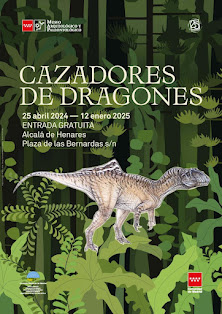Los dinosaurios también padecían enfermedades y sufrían heridas. Sin embargo, la única evidencia directa que se tiene en vertebrados fósiles son las alteraciones óseas ya que los tejidos blandos no se conservan. Este es el tema de otro de los trabajos presentados durante el XVI Annual Meeting de la European Association of Vertebrate Paleontologists (EAVP), sobre diversos tipos de patologías identificadas en diversas series caudales de dinosaurios titanosaurios del yacimiento del Cretácico Superior de Lo Hueco (Fuentes, Cuenca).
Como resultado se presentaron 10 vértebras caudales y 4 arcos hemales con patologías de origen traumático, congénito-traumático y degenerativo–idiopático manifestando bien el crecimiento de masa ósea o bien su pérdida y evidenciados por discontinuidades, destrucción ósea, aumento y alteraciones de densidad. Aquí va el resumen:
The paleontological site of Lo Hueco (Upper Cretaceous, Spain, Cuenca) has provided a great variety of partial skeletons of articulated titanosaurs, providing a unique paleontological record in Europe. In the present study, some titanosaur series of caudal vertebrae from the site were revised for the first time in order to determine possible pathologies affecting these individuals.
A comparative anatomical study was carried out to determine the diversity of morphologies present in the titanosaurs of Lo Hueco and to discriminate possible pathological conditions from intraspecific variability, and diagenetic or biostratinomic deformation.
Subsequently, 14 pathological elements have been identified, 10 corresponding to caudal vertebrae and 4 belonging to haemal arches. Differential diagnosis has been carried out on all of the specimens based on a macroscopic analysis occasionally supplemented with computerized tomography (CT) scan explorations.
As results, spondylosis deformans has been identified in two vertebral centra, two cases of subchondral cysts, three fissured haemal arches, a dislocation of the chevron in a vertebral centrum, several elements affected by enthesophytes, and a vertebra with a modified prezigapophysis and outline of the anterior articular face of congenital or traumatic origin.
-----
Más información:





























No hay comentarios:
Publicar un comentario